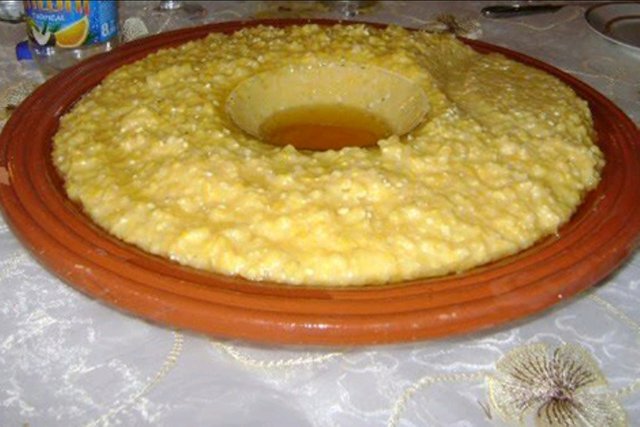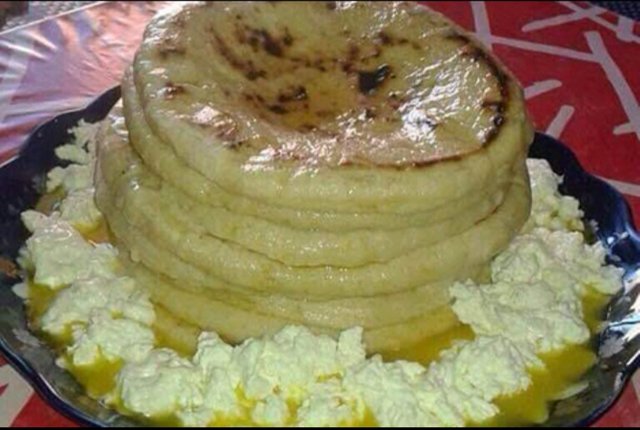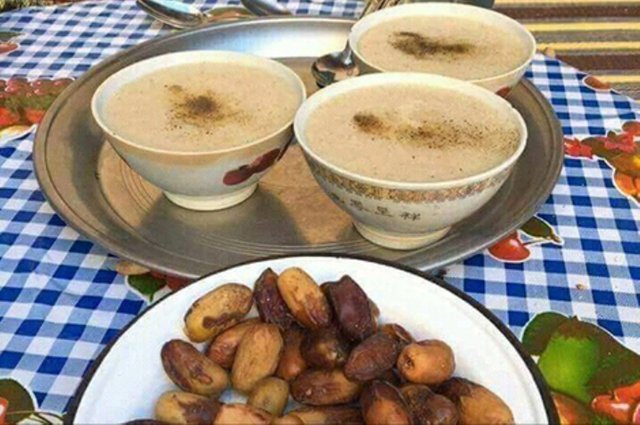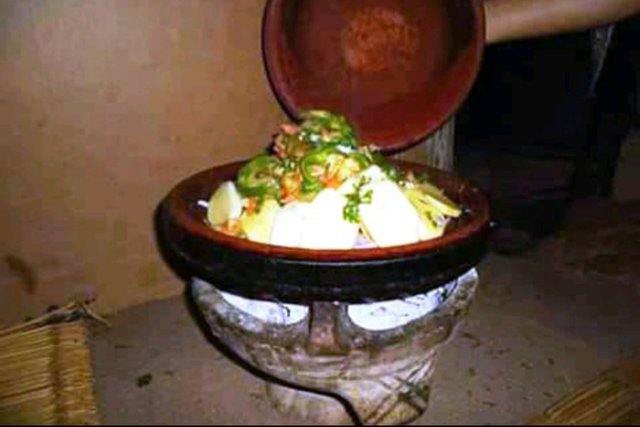Tagla, the pillars of the Sousa ( moroccan family ) tables, to create warmth in the air

Tagla, the pillars of the Sousa ( moroccan family ) tables, to create warmth in the air
In the winter, food habits in many parts of Morocco are undergoing changes in climate change in this low-temperature season. This necessitates the choice of meals that will warm the atmosphere and provide the necessary energy for the bodies, as required by the period, in mountainous areas in particular. Provide heating devices, especially firewood.
In the extreme cold, varied dishes and dishes that furnish the tables of the rural and rural villages, although some of them are not without even the tables of the city dwellers, soups and main dishes and side and drinks, all come in the winter, and shared with being full of components contribute to the heating of the body and energy.

Tagla corn flour, oil and local spices
It is a special winter food that people accept in their homes and in popular cafes during the cold season. They have high nutritional value. They are also brought with spices and some medicinal herbs, known for their effective role in heating the body. The methods of preparation vary from region to region, depending on customs and traditions, and geographical location.
Sous and its areas are not unusual in the food patterns of the separation of the village, there is a variety of food habits, and forms of cuisine do not attend the tables of Swassa only in such periods of the year and notes that the mountainous regions of Psos still maintain the preparation of special dishes, Such as barley, olive oil, corn and local herbs.

Toasted bread with homemade oil and butter
Since the dawn of the day, women have been mobilizing to set fire to an external facility called Anwal, to prepare the "oven" or "ternot" bread, which is served at the hot breakfast table with the argan oil As well as, immediately after breakfast, put what will be eaten on a "casserole" with a burning fire, cooked on the ground, giving it a special flavor.
Khalid al-Oweid, a professor of heritage studies, said in a statement that the Sousse areas in general, whether in its mountain or coastal plain, which are predominantly rural in terms of their connection to the land and agriculture, especially the mullet, are known to change their diet according to the seasons of the year.

Soup (Azakev), a regular soup, which is mainly based on barley with dates
He added that the winter, characterized by a cold cold, "in which a person needs warm meals, and provides the body calories, as a nutrition first, and then as a cold, and do not forget that the diet in the mountainous areas, and even the coastal until recently, depends Mainly on barley as a component of the food, hardly a day passes without consumption, which is being plowed instead of wheat because of its great nutritional value, and today we note a strong return to the consumption of this product.
"In the morning, we prepare the hakira (Azkif), which is the normal drink, which is based mainly on barley, and the demand for katani, Especially the pizzeria mixed with spices The preparation of tea, it is not without some of the weeds, especially thyme, which have the peculiarities of the warmth of the bodies.
"We find porridge or takla, which is based on barley or corn, and often consumed with argan oil," the researcher added. In this period of the year, he said, "some driers, such as black figs known as mountainous areas, and cactus fruit, dried in the summer and stored until the winter, are being returned."
In the vicinity of the coastal strip in Souss, Alouwaid said: "In addition to the presence of the above dishes, with its distinctly prepared with a mixture of spices, garlic and fresh chili pepper, the coastal areas are known for the population's demand for mussels (Buzrouk) Using spices, especially garlic, where the people of these areas store mussels after drying to take a basic meal in the cold periods.

The food of the tajine is on a "casserole" with a burning fire, cooked on top, giving it a special flavor.
The majority of the Sous regions share their preparation methods and their quantities of preparation. However, they share a weapon for the local population in the cold winter days, especially in the days of "nights", which have a very low temperature, Which necessitates armament, after layers of clothing, with nourishment that makes the body resist the cold waves.